Abstract
1. Limited isovolaemic haemodilution was produced in cats by addition of dextran 75-Ringer solution to an extracorporeal blood reservoir connected in series with the cat. Total hepatic venous outflow was neasured using a hepatic venous long-circuit and hepatic arterial flow was measured with an electromagnetic flow probe. Oxygen uptake was monitored in the guts and liver. Na-pentobarbitone anaesthesia was used. 2. Following reduction of the haematocrit (from 31 to 22) the oxygen uptake of the gut segment and liver were maintained. Gut conductance increased to 125% of control while the oxygen extraction ratio increased to only 109%. The hepatic arterial conductance did not change in spite of a greatly reduced (to 68%) oxygen delivery. Hepatic extraction increased to 140% of control. 3. The hepatic artery did not dilate to maintain constant oxygen supply to the liver thus confirming our previous observation that blood flow is not coupled to hepatic metabolism. 4. Oxygen extraction in the gut correlated well with changes in portal blood flow but not with changes in vascular conductance, arterial blood pressure or oxygen delivery. 5. The blood flow of the gut (vascular beds draining into the portal vein in the splenectomized preparation) was controlled in a manner that prevented changes in portal venous PO2 in spite of a reduction in oxygen content. Local PO2 and perhaps pH, are suggested as the factors controlling gut blood flow following haemodilution. 6. Changes in portal blood flow correlated with changes in portal vascular (intrahepatic) conductance such that increased portal flow produced an increased portal conductance thereby maintaining portal venous pressure constant.
Full text
PDF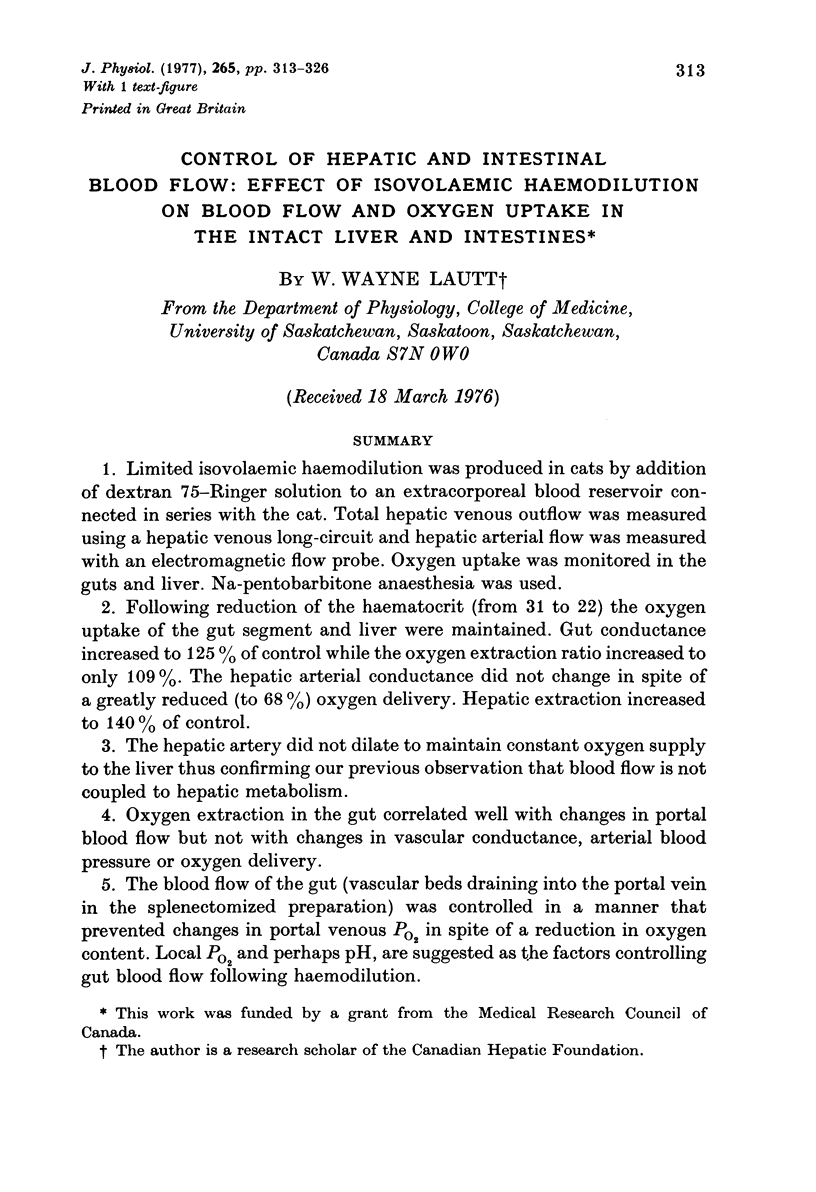
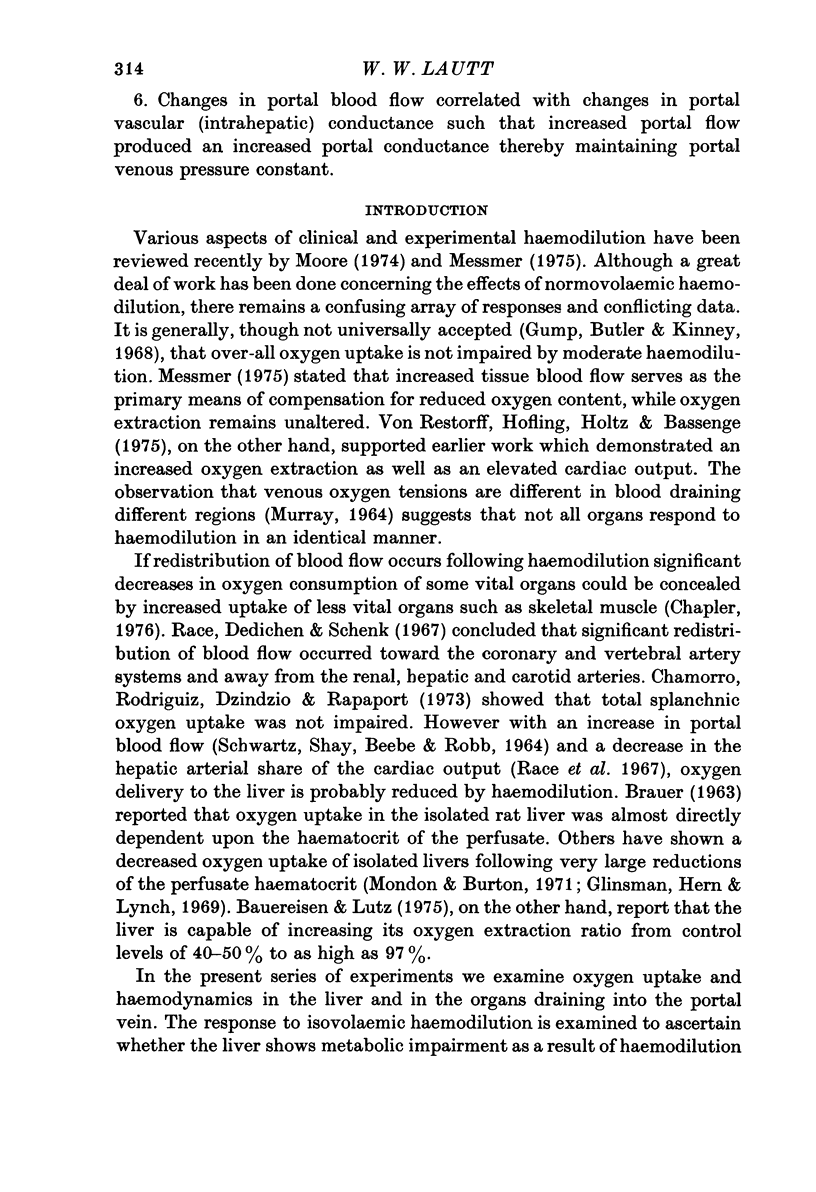
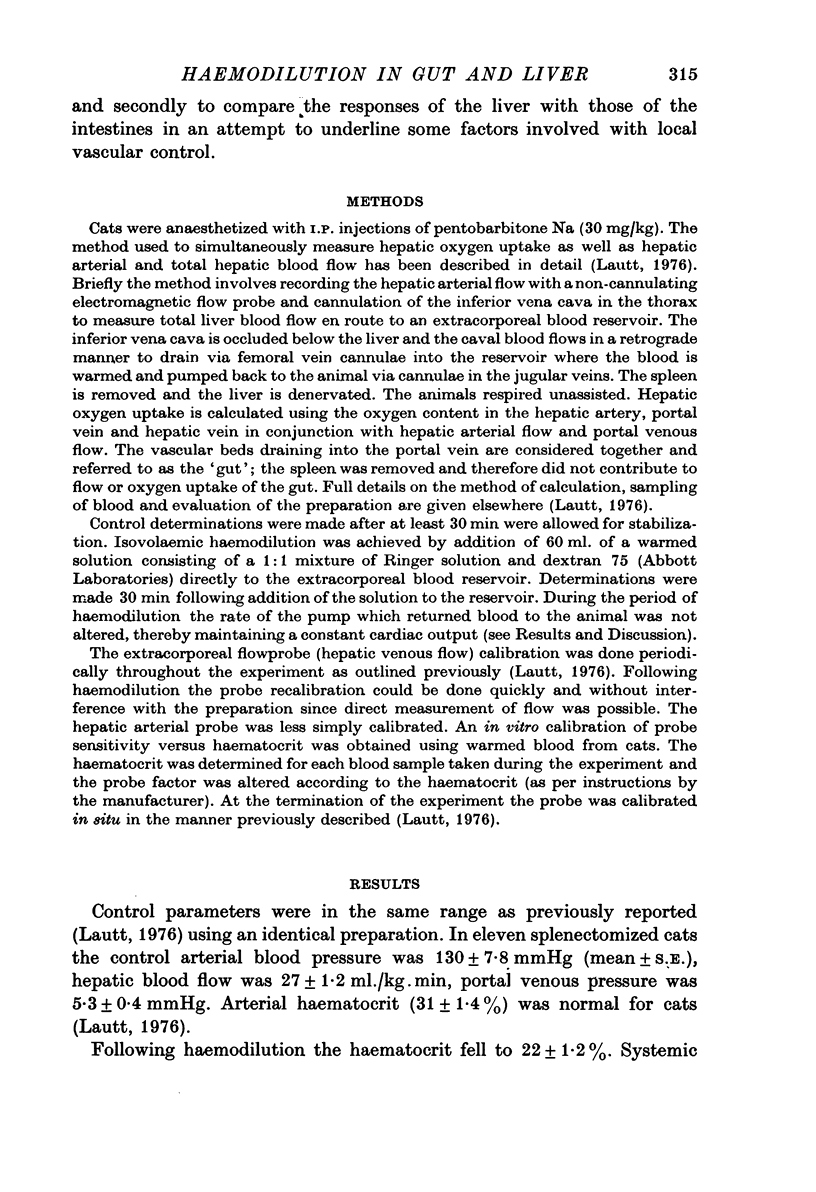
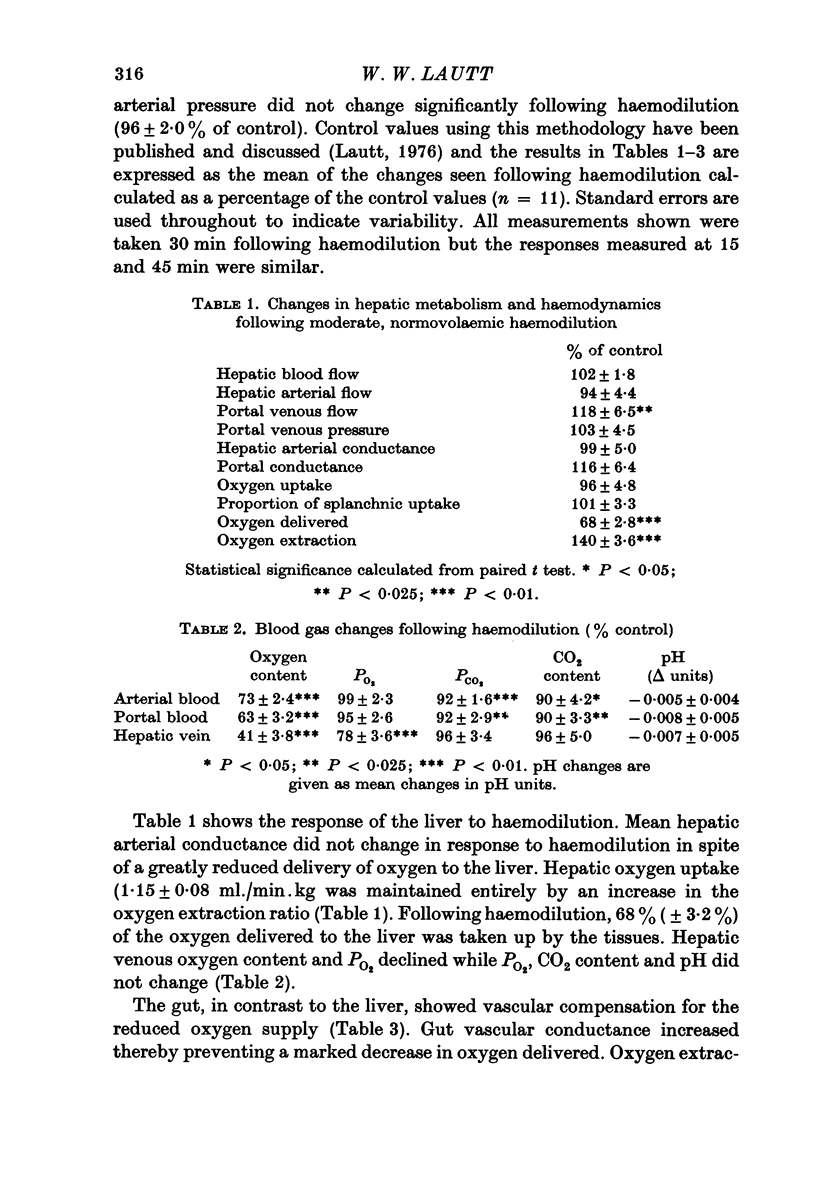
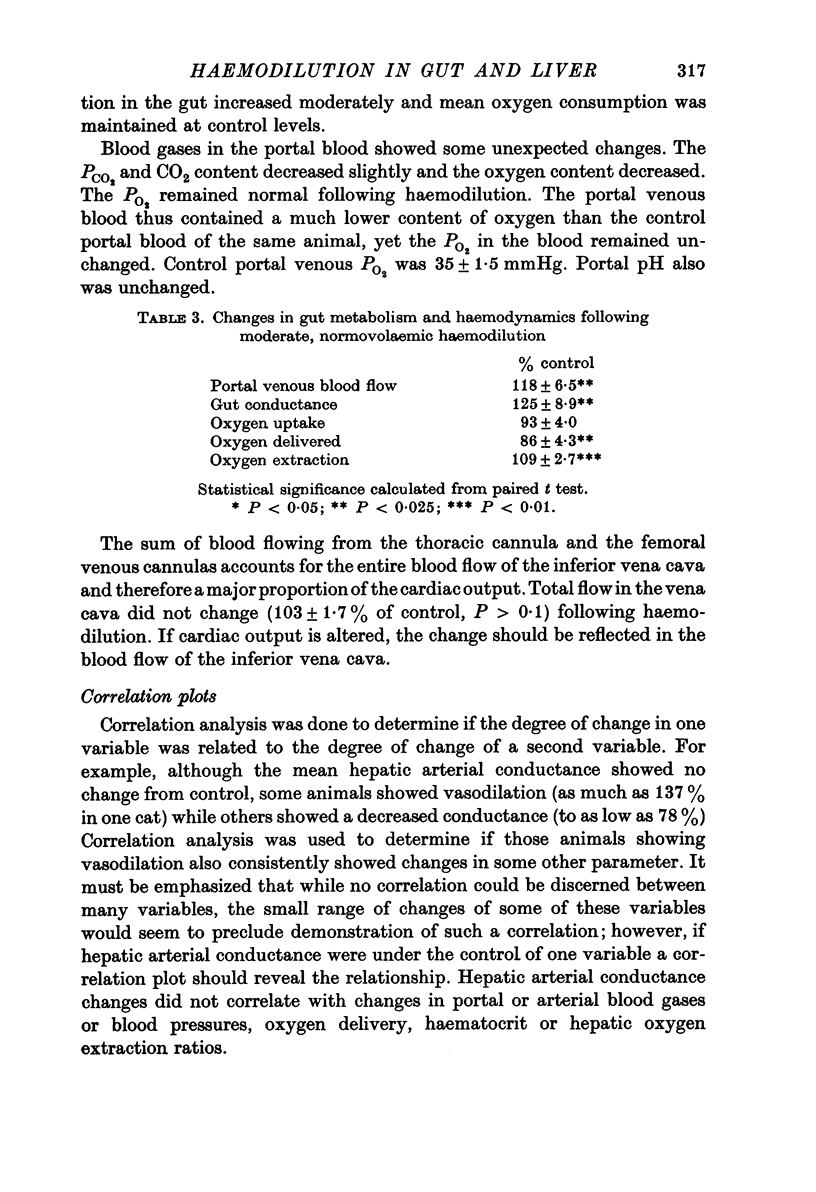
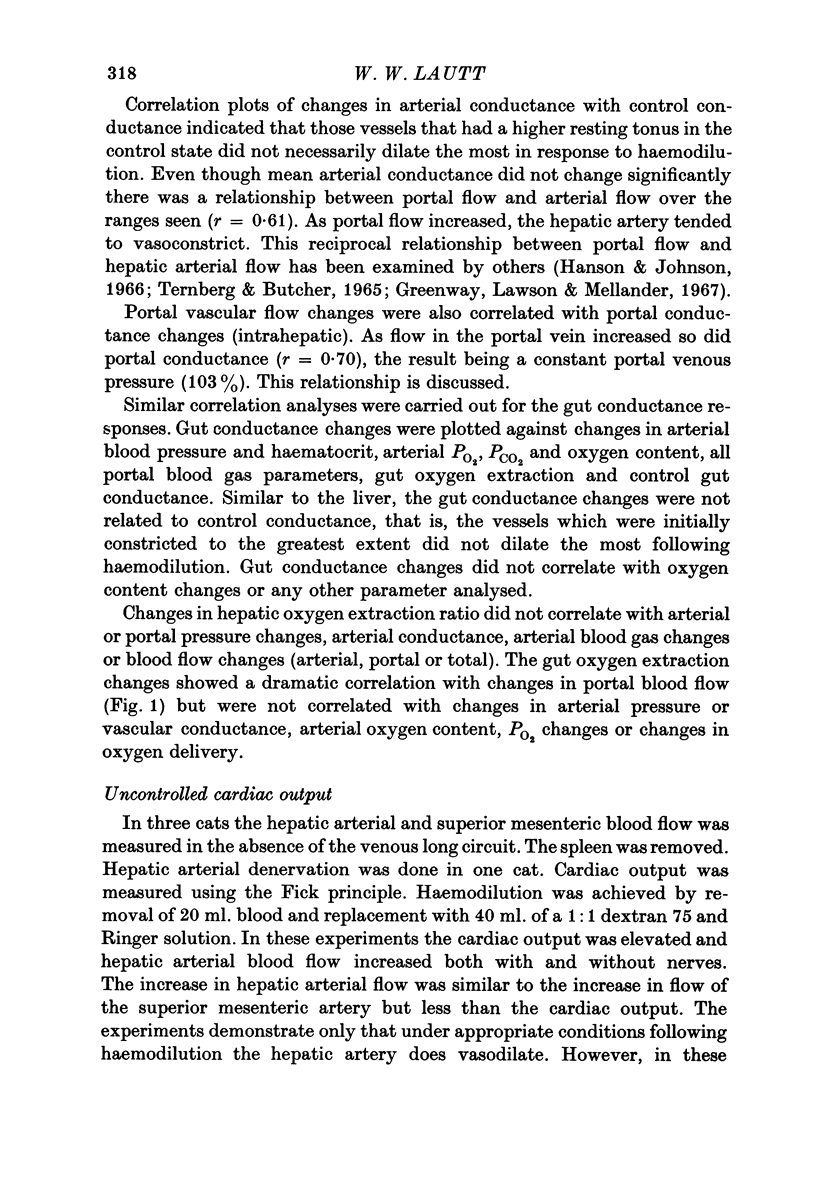
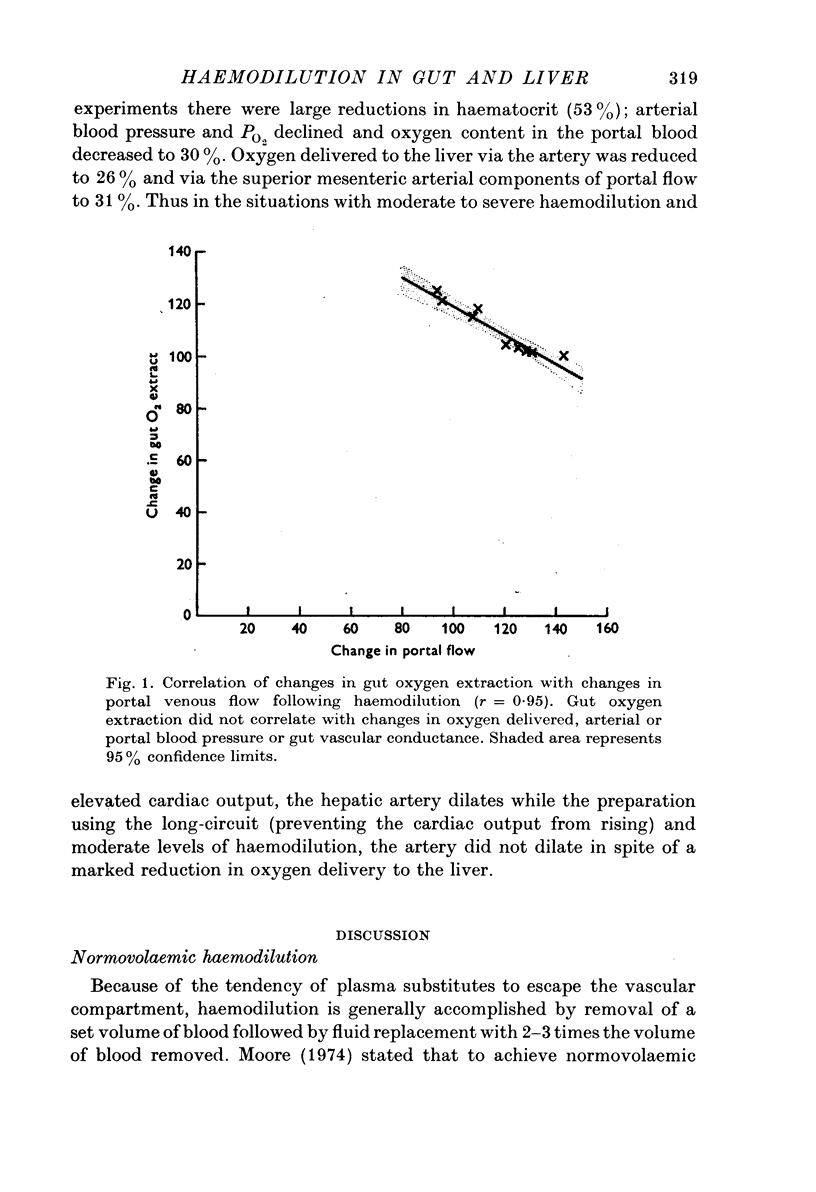
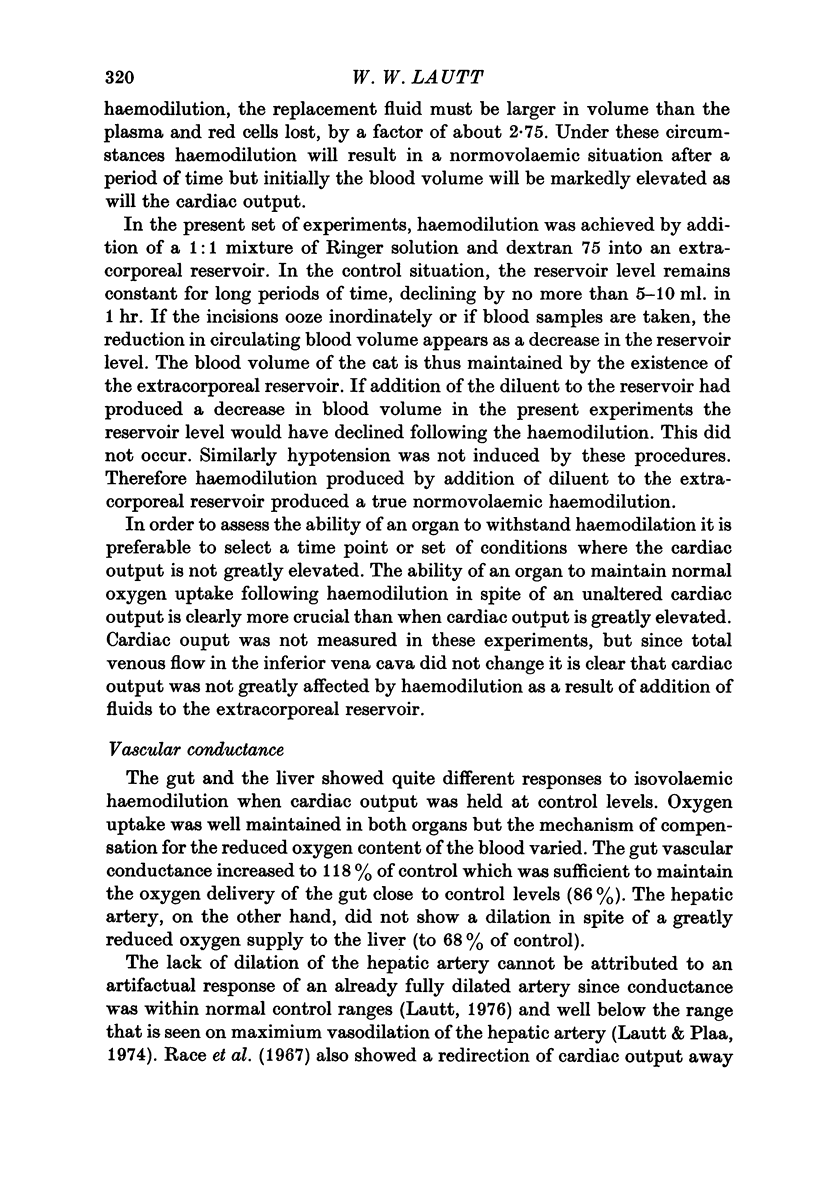
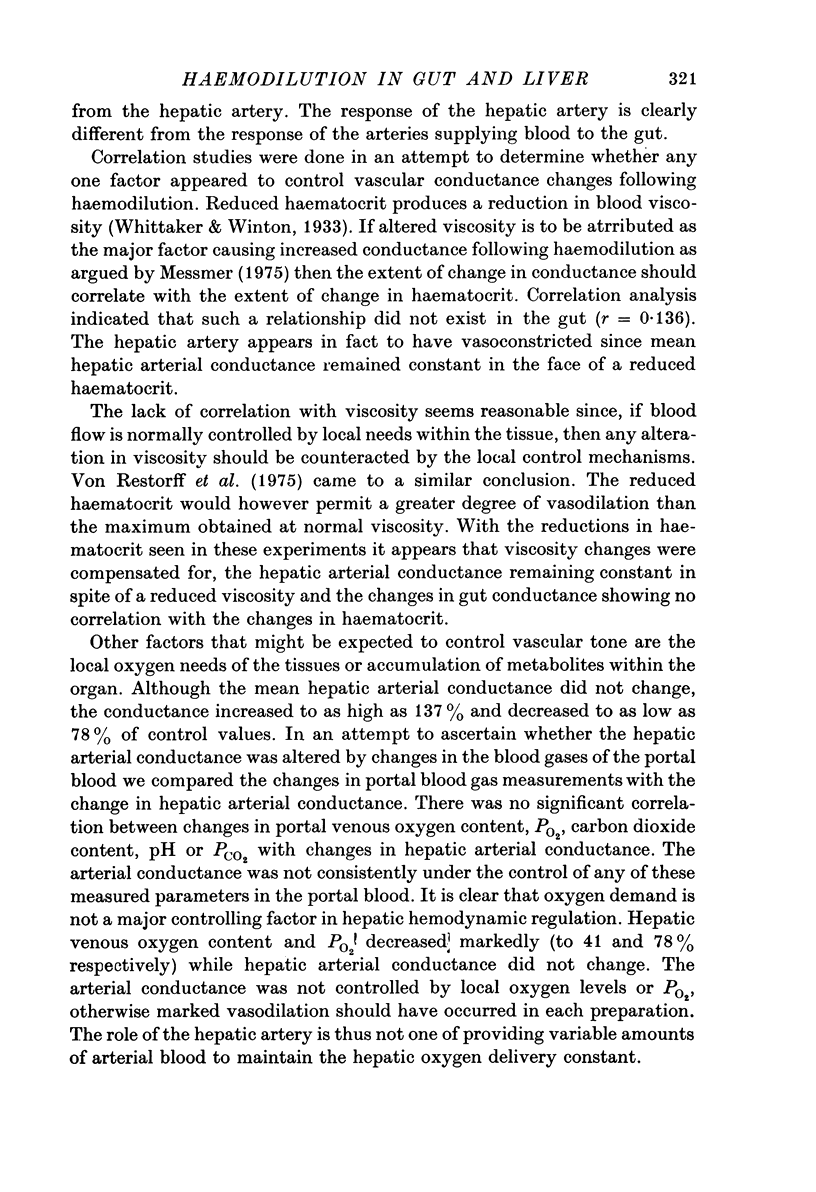
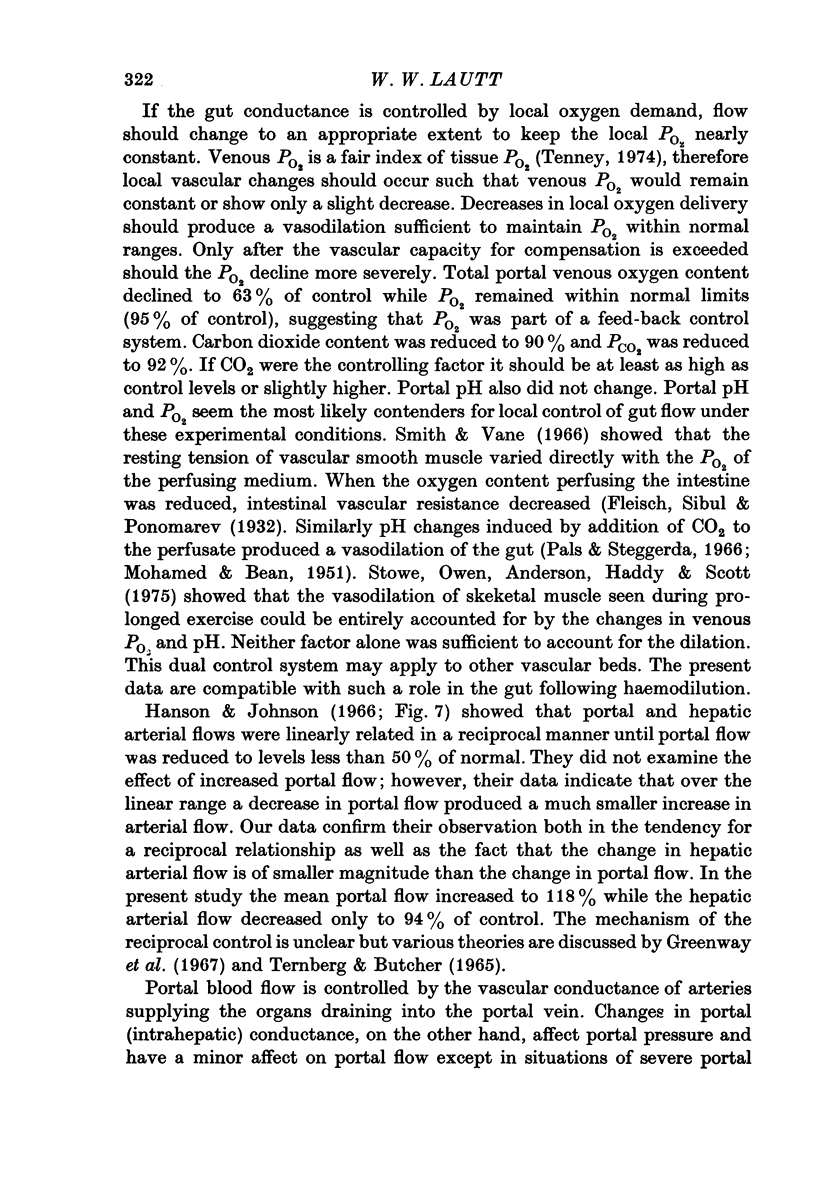

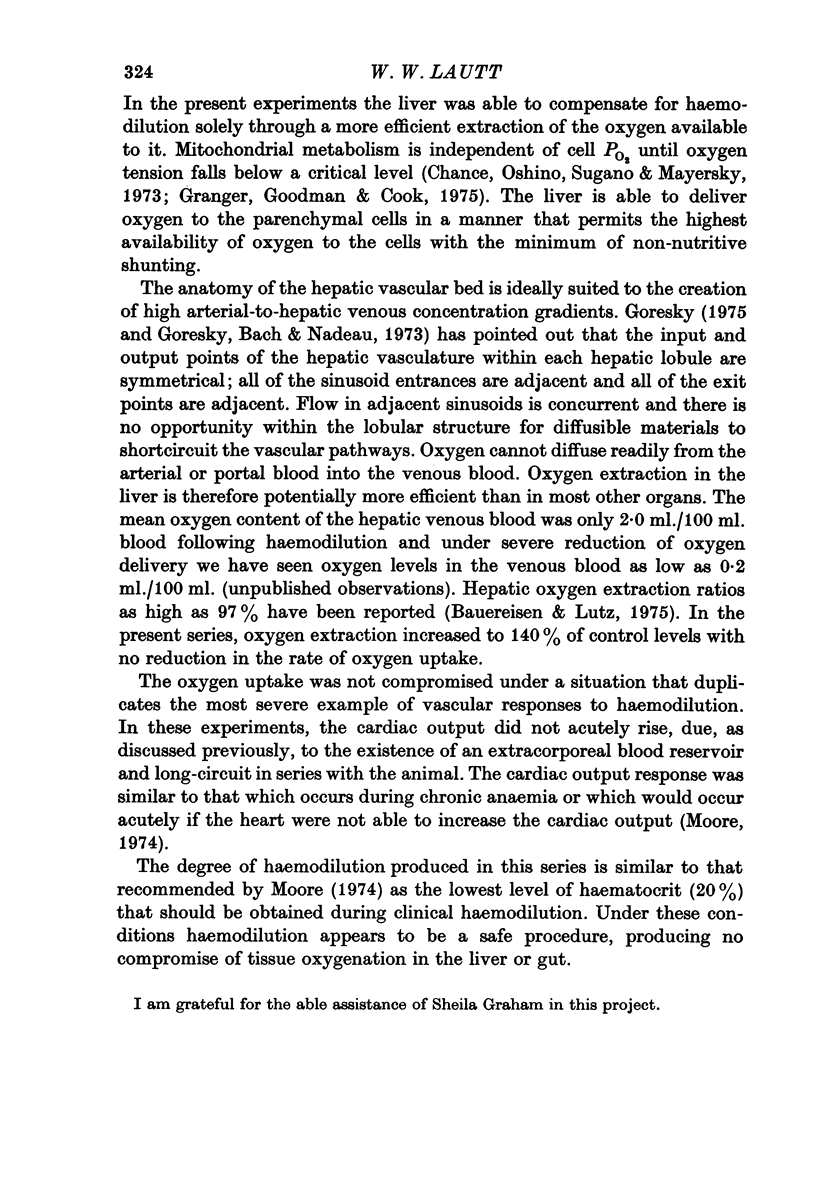
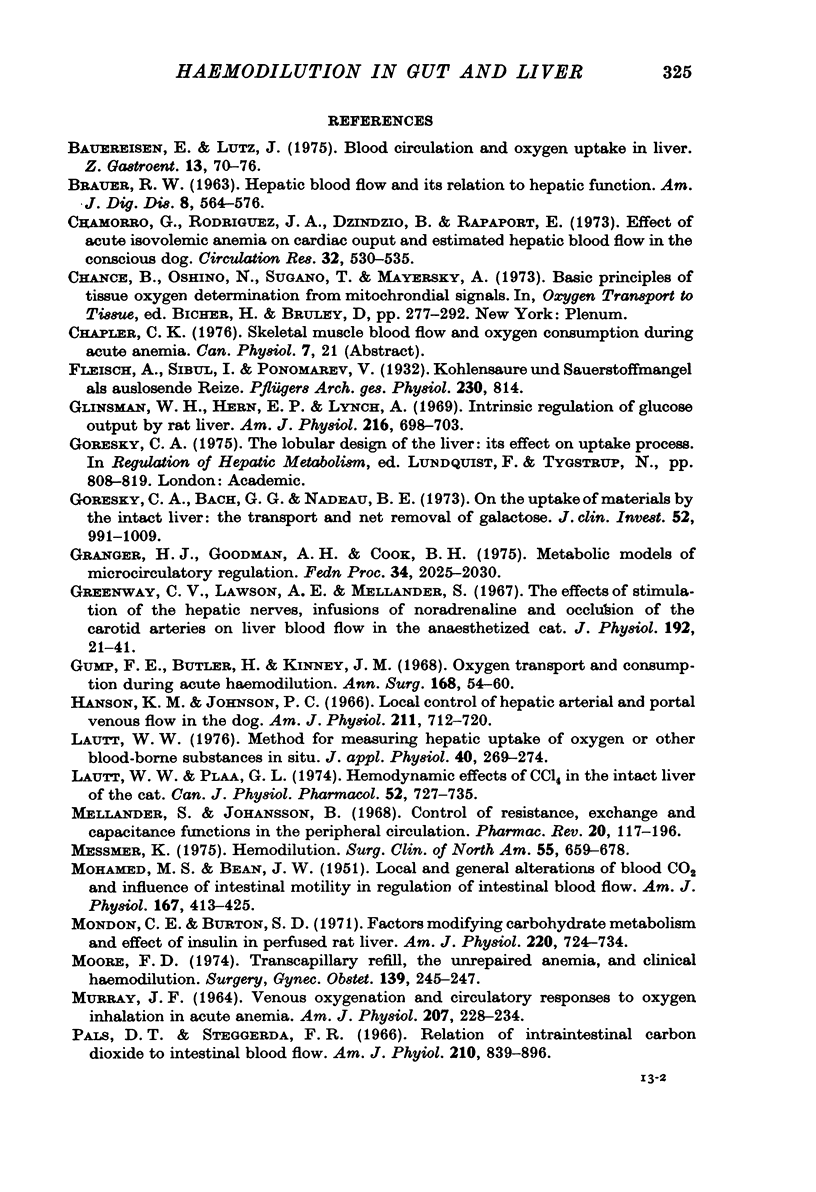
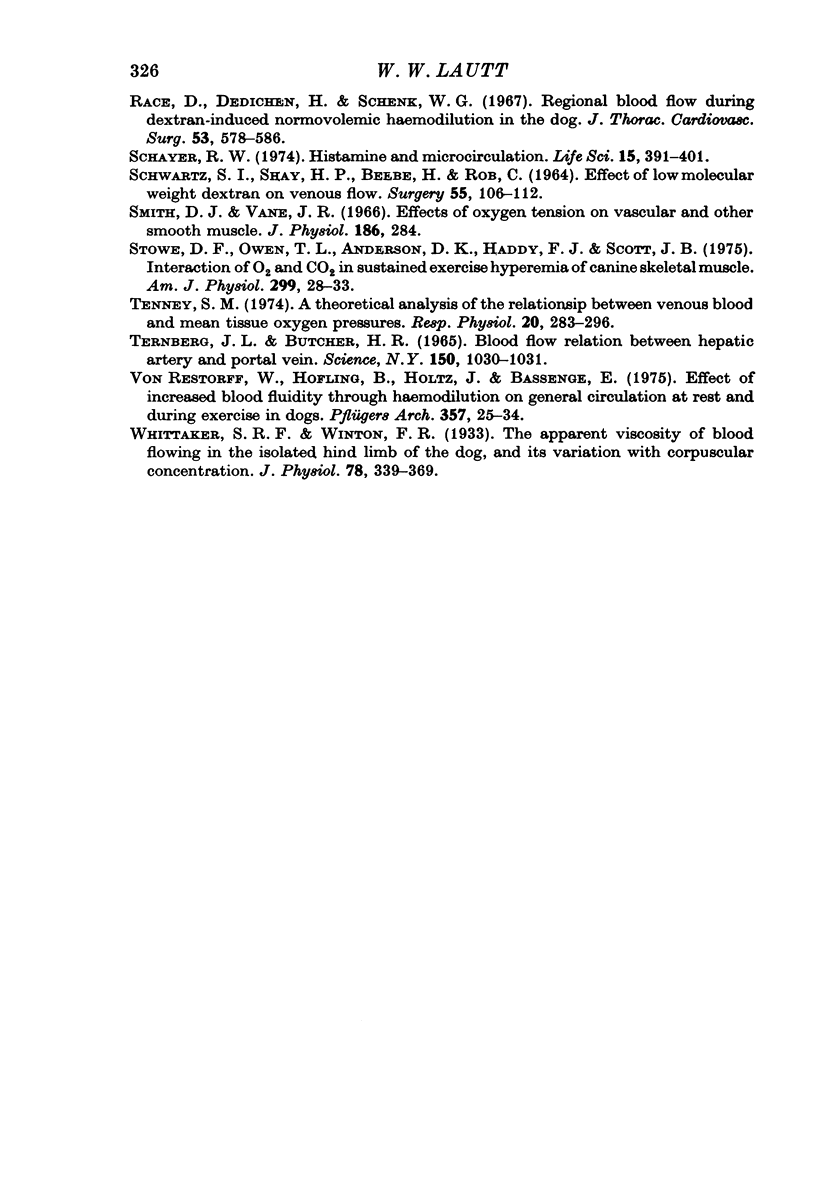
Selected References
These references are in PubMed. This may not be the complete list of references from this article.
- BRAUER R. W. Hepatic blood flow and its relation to hepatic function. Am J Dig Dis. 1963 Jul;8:564–576. doi: 10.1007/BF02239455. [DOI] [PubMed] [Google Scholar]
- Chamorro G., Rodriguez J. A., Dzindzio B., Rapaport E. Effect of acute isovolemic anemia on cardiac output and estimated hepatic blood flow in the conscious dog. Circ Res. 1973 Apr;32(4):530–535. doi: 10.1161/01.res.32.4.530. [DOI] [PubMed] [Google Scholar]
- Chance B., Oshino N., Sugano T., Mayevsky A. Basic principles of tissue oxygen determination from mitochondrial signals. Adv Exp Med Biol. 1973;37A:277–292. doi: 10.1007/978-1-4684-3288-6_35. [DOI] [PubMed] [Google Scholar]
- Glinsmann W. H., Hern E. P., Lynch A. Intrinsic regulation of glucose output by rat liver. Am J Physiol. 1969 Apr;216(4):698–703. doi: 10.1152/ajplegacy.1969.216.4.698. [DOI] [PubMed] [Google Scholar]
- Goresky C. A., Bach G. G., Nadeau B. E. On the uptake of materials by the intact liver. The transport and net removal of galactose. J Clin Invest. 1973 May;52(5):991–1009. doi: 10.1172/JCI107300. [DOI] [PMC free article] [PubMed] [Google Scholar]
- Granger H. J., Goodman A. H., Cook B. H. Metabolic models of microcirculatory regulation. Fed Proc. 1975 Oct;34(11):2025–2030. [PubMed] [Google Scholar]
- Greenway C. V., Lawson A. E., Mellander S. The effects of stimulation of the hepatic nerves, infusions of noradrenaline and occlusion of the carotid arteries on liver blood flow in the anaesthetized cat. J Physiol. 1967 Sep;192(1):21–41. doi: 10.1113/jphysiol.1967.sp008285. [DOI] [PMC free article] [PubMed] [Google Scholar]
- Gump F. E., Butler H., Kinney J. M. Oxygen transport and consumption during acute hemodilution. Ann Surg. 1968 Jul;168(1):54–60. doi: 10.1097/00000658-196807000-00006. [DOI] [PMC free article] [PubMed] [Google Scholar]
- Hanson K. M., Johnson P. C. Local control of hepatic arterial and portal venous flow in the dog. Am J Physiol. 1966 Sep;211(3):712–720. doi: 10.1152/ajplegacy.1966.211.3.712. [DOI] [PubMed] [Google Scholar]
- Lautt W. W. Method for measuring hepatic uptake of oxygen or other blood-borne substances in situ. J Appl Physiol. 1976 Feb;40(2):269–274. doi: 10.1152/jappl.1976.40.2.269. [DOI] [PubMed] [Google Scholar]
- Lautt W. W., Plaa G. L. Hemodynamic effects of CCl4 in the intact liver of the cat. Can J Physiol Pharmacol. 1974 Jun;52(3):727–735. doi: 10.1139/y74-093. [DOI] [PubMed] [Google Scholar]
- MOHAMED M. S., BEAN J. W. Local and general alterations of blood CO2 and influence of intestinal motility in regulation of intestinal blood flow. Am J Physiol. 1951 Nov;167(2):413–425. doi: 10.1152/ajplegacy.1951.167.2.413. [DOI] [PubMed] [Google Scholar]
- MURRAY J. F. VENOUS OXYGENATION AND CIRCULATORY RESPONSES TO OXYGEN INHALATION IN ACUTE ANEMIA. Am J Physiol. 1964 Jul;207:228–234. doi: 10.1152/ajplegacy.1964.207.1.228. [DOI] [PubMed] [Google Scholar]
- Mellander S., Johansson B. Control of resistance, exchange, and capacitance functions in the peripheral circulation. Pharmacol Rev. 1968 Sep;20(3):117–196. [PubMed] [Google Scholar]
- Messmer K. Hemodilution. Surg Clin North Am. 1975 Jun;55(3):659–678. doi: 10.1016/s0039-6109(16)40641-9. [DOI] [PubMed] [Google Scholar]
- Moore F. D. Transcapillary refill, the unrepaired anemia, and clinical hemodilution. Surg Gynecol Obstet. 1974 Aug;139(2):245–247. [PubMed] [Google Scholar]
- Pals D. T., Steggerda F. R. Relation of intraintestinal carbon dioxide to intestinal blood flow. Am J Physiol. 1966 Apr;210(4):893–896. doi: 10.1152/ajplegacy.1966.210.4.893. [DOI] [PubMed] [Google Scholar]
- Race D., Dedichen H., Schenk W. G., Jr Regional blood flow during dextran-induced normovolemic hemodilution in the dog. J Thorac Cardiovasc Surg. 1967 Apr;53(4):578–586. [PubMed] [Google Scholar]
- SCHWARTZ S. I., SHAY H. P., BEEBE H., ROB C. EFFECT OF LOW MOLECULAR WEIGHT DEXTRAN ON VENOUS FLOW. Surgery. 1964 Jan;55:106–112. [PubMed] [Google Scholar]
- Schayer R. W. Histamine and microcirculation. Life Sci. 1974 Aug 1;15(3):391–401. doi: 10.1016/0024-3205(74)90338-5. [DOI] [PubMed] [Google Scholar]
- Smith D. J., Vane J. R. Effects of oxygen tension on vascular and other smooth muscle. J Physiol. 1966 Oct;186(2):284–294. doi: 10.1113/jphysiol.1966.sp008034. [DOI] [PMC free article] [PubMed] [Google Scholar]
- Stowe D. F., Owen T. L., Anderson D. K., Haddy F. J., Scott J. B. Interaction of O2 and CO2 in sustained exercise hyperemia of canine skeletal muscle. Am J Physiol. 1975 Jul;229(1):28–33. doi: 10.1152/ajplegacy.1975.229.1.28. [DOI] [PubMed] [Google Scholar]
- Tenney S. M. A theoretical analysis of the relationship between venous blood and mean tissue oxygen pressures. Respir Physiol. 1974 Jun;20(3):283–296. doi: 10.1016/0034-5687(74)90025-5. [DOI] [PubMed] [Google Scholar]
- Ternberg J. L., Butcher H. R., Jr Blood-flow relation between hepatic artery and portal vein. Science. 1965 Nov 19;150(3699):1030–1031. doi: 10.1126/science.150.3699.1030. [DOI] [PubMed] [Google Scholar]
- Whittaker S. R., Winton F. R. The apparent viscosity of blood flowing in the isolated hindlimb of the dog, and its variation with corpuscular concentration. J Physiol. 1933 Jul 10;78(4):339–369. doi: 10.1113/jphysiol.1933.sp003009. [DOI] [PMC free article] [PubMed] [Google Scholar]
- von Restorff W., Höfling B., Holtz J., Bassenge E. Effect of increased blood fluidity through hemodilution on general circulation at rest and during exercise in dogs. Pflugers Arch. 1975;357(1-2):25–34. doi: 10.1007/BF00584542. [DOI] [PubMed] [Google Scholar]


